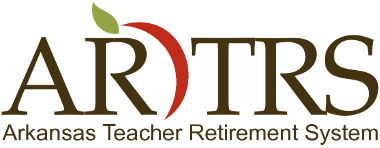October is National Retirement Security Month. Congress created this recognition as a reminder of the importance of saving for retirement. Saving for retirement is a sorely-needed message in our country – a recent survey showed that 79% of Americans agree there is a retirement crisis, and researchers estimate that “almost half of American households will run short of money in retirement if they stop working at 65.”
For ATRS members, retirement security can be described as three legs of a stool – your ATRS benefit, Social Security, and personal savings. To be fully secure in retirement, you need all three legs in place. A contributory ATRS member who has 28 years of credited service will receive a monthly benefit from ATRS that is more than 60% of their final average salary. They can typically expect Social Security to pay a benefit equal to the remaining 40% of their work salary. Together, your ATRS benefit and Social Security can provide a secure monthly income to cover your day-to-day expenses.
But those are only two legs of the stool. That third leg – personal savings – can be critically important, because we all run into unexpected expenses from time to time. A car accident, a busted water heater, a serious illness – these are the types of unexpected events that can quickly strain our financial resources. If you have a nest egg saved, that can make all the difference in protecting your future financial security even when the unexpected happens.
There are many different options available for Americans to save for retirement. Many of them come with tax advantages that can save you money now or in the future. Even if you have already retired, you still have options for tax-advantaged retirement savings.
If you aren’t building a retirement savings nest egg yet, or you need to grow your nest egg, here are some options you can consider.
For all members who are working for an ATRS-covered employer:
403b or 457b Plan: Many ATRS employers allow employees to contribute additional pre-tax dollars to a retirement account that is separate from ATRS. These savings will grow tax-deferred. You can begin withdrawing them when you retire, and in some cases even earlier. Check with your employer’s HR office for more information.
For all members, whether working or retired:
529 Plan: Arkansas offers the Brighter Future 529 Plan that allows tax-advantaged savings to help pay for college and other qualified education expenses. You can open a 529 plan for any one you choose, including your own child or grandchild, a niece or nephew, or even a non-family member. And if you live in Arkansas, you may be eligible to deduct up to $5,000 from your state taxes (or $10,000 for a married couple) for contributions to a 529 plan. Additional info is here: https://brighterfuturedirect529.com/
Traditional or Roth IRA: Any taxpayer with earned income can open and contribute to an Individual Retirement Arrangement (IRA) account, even when you are also covered by ATRS as your retirement plan. For a Traditional IRA, your investment earnings are generally not taxed until you withdraw them, and depending on your income your IRA contributions may be tax deductible when you make them. For a Roth IRA, your IRA contributions are not tax-deductible, but your investment earnings may be tax free. Additional info is here:
https://www.irs.gov/retirement-plans/traditional-and-roth-iras
https://www.irs.gov/taxtopics/tc451
For non-retired members who are still working for an ATRS-covered employer:
T-DROP: ATRS offers actively-employed members with at least 28 years of credited service the ability to build savings in the Teacher Deferred Retirement Option Plan. When you enroll in T-DROP, you begin to accumulate a portion of monthly retirement benefits in a cash savings account, even as you continue to work for your school or other ATRS employer. And once you are in T-DROP, you no longer have to make member contributions, which means that 7% contribution will stay in your salary and not be deducted. Additional info is here:
https://www.artrs.gov/teacher-deferred-retirement-option-t-drop
Keep in mind that the tax advantages and tax implications of these different plans may vary, depending on your unique situation. Consider talking with a financial advisor or tax expert as you make decisions on how to save for retirement.
Finally, you can find more information on financial planning and retirement at this link:
https://www.consumerfinance.gov/consumer-tools/retirement/
As always, if you ever have a question about your retirement options or need information or advice, please reach out to our counselors by calling (501) 682-1517 or e-mailing info@artrs.gov. And if you have any concerns or questions about the System as a whole, please contact me at the email address or phone numbers below.
Mark White
Executive Director, ATRS
MarkW@artrs.gov
Office: (501) 621-8853
Cell: (501) 541-2057
